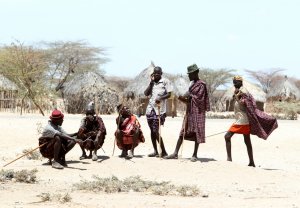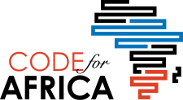por Jessica Weiss*
Em Turkana, uma região pobre e seca do Quênia, as descobertas recentes de água e petróleo podem mudar a vida de moradores que dependem de ajuda alimentar para sobrevivência.
Em março de 2012, o Presidente Mwai Kibaki do Quênia anunciou que foi descoberto petróleo em Turkana após uma perfuração exploratória por uma empresa de petróleo anglo-irlandêsa. E no ano passado, a Unesco anunciou que grandes reservas de águas subterrâneas foram encontradas na área atingida pela seca.
Como será que os novos recursos ajudarão os quenianos e qual parte da nova riqueza fluirá de volta para os investidores europeus? A resposta é complexa, mas uma equipe de jornalistas de dados está trabalhando para torná-la mais clara.
O Land Quest, um experimento de jornalismo de investigação transfronteiriço está usando dados para iluminar os concorrentes interesses financeiros no Quênia. Ele mapeia o fluxo de dinheiro da ajuda da Europa para o Quênia e o fluxo de lucros do Quênia de volta à Europa.
O site extrai dados de ajuda europeia para mapear o impacto da aquisição de terras por interesses internacionais de petróleo e água. Também mostra a localização e outras informações sobre a ajuda ao desenvolvimento e projetos do setor privado em Turkana e nas proximidades do Lago Naivasha. Lá, empresas transnacionais cultivam boa parte do fornecimento anual de flores da Europa, enquanto organizações sem fins lucrativos, financiadas pela União Europeia procuram proteger a qualidade da água, defender os direitos trabalhistas e reassentar as pessoas deslocadas internamente.
Como funciona
O site é alimentado pela plataforma de mapeamento JEO, criada pelo InfoAmazonia no Brasil.
O Land Quest foi construído para ser fácil de usar por jornalistas. Os desenvolvedores criaram um “script que permite que planilhas de Google Doc incidam diretamente sobre as camadas do mapa”, disse Gustavo Faleiros, que fundou InfoAmazonia e ajudou no projeto Land Quest. “Em termos práticos, os pontos que você vê no mapa ficam nas planilhas de Google”, disse Faleiros, “e isso significa que é mais fácil para os jornalistas atualizarem os dados.”
Quando os visitantes do site param o mouse sobre alguns pontos no mapa, também podem explorar as investigações e recursos multimídia que dão uma compreensão mais profunda do que está acontecendo no local.
O projeto é um experimento de jornalismo de investigação transfronteiriço criado por um grupo de jornalistas quenianos, europeus e americanos. Foi co-financiado pelo Sandbox Fund da African Media Initiative, e liderado pela Internews no Quênia em colaboração com o jornal espanhol El Mundo e InfoAmazonia. O site do El Mundo está publicando a maior parte do conteúdo em espanhol. Veículos de comunicação quenianos poderão acessar o conteúdo do Land Quest em inglês e publicá-lo em seus próprios sites.
Eva Constantaras, consultora em jornalismo de dados da Internews no Quênia e uma das criadoras do Land Quest, disse que o projeto espera que, num futuro próximo, jornalistas quenianos possam postar no Land Quest suas próprias investigações de dados sobre recursos naturais e propriedade da terra no Quênia.
“Nós também esperamos encontrar financiamento para continuar a identificar e fazer o upload de novos conjuntos de dados ao mapa para serem analisados e visualizados por jornalistas em suas próprias matérias”, disse Constantaras . “O acesso aos dados é um enorme desafio para os jornalistas no Quênia, e procuramos facilitar o acesso de dados.”
Jessica Weiss, ex-editora-chefe da IJNet, é uma jornalista americana com base em Buenos Aires.
Foto de homens em Turkana, cortesia do DFID – UK Department for International Development, sob licenca Creative Commons







